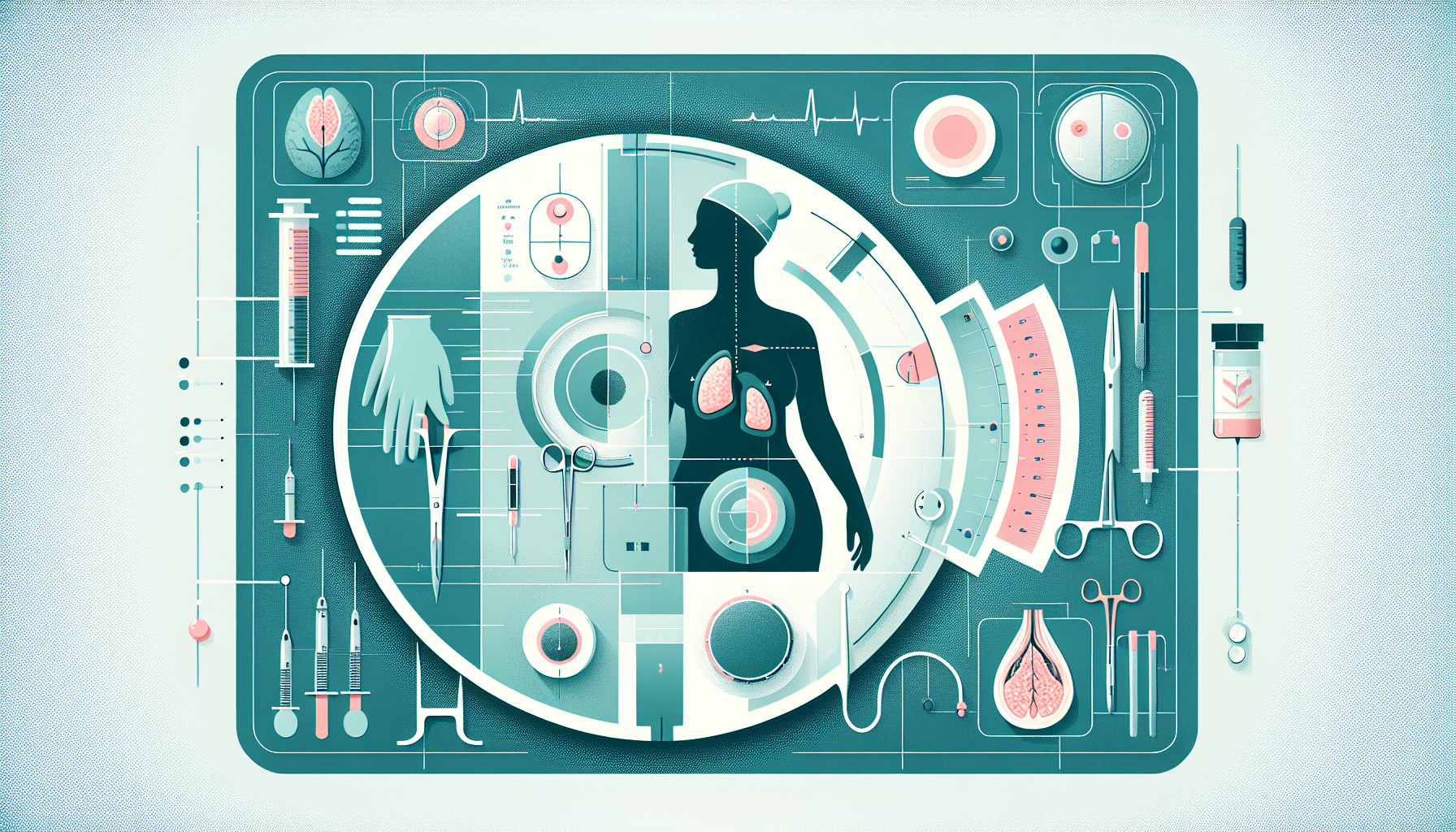Our Summary
This research paper discusses a new surgical technique for breast reconstruction following a type of surgery known as nipple-sparing mastectomy, which is becoming more popular. Traditional methods of reconstruction can be difficult when the patient has larger, sagging breasts, often leaving excess skin. The researchers have adapted a new method, referred to as the “buttonhole” technique, to address this issue. They tested their modified method on 15 patients, reconstructing a total of 29 breasts. There were some post-surgery complications, with one patient experiencing nipple necrosis (tissue death) and another losing a tissue expander due to infection. However, all patients eventually received full expansion and permanent implants. This new technique allows for immediate reconstruction after a nipple-sparing mastectomy, while also safely lifting the breast and creating a visually pleasing result. The risks to the nipple and areola (the darker skin around the nipple) are considered acceptable.
FAQs
- What is the “buttonhole” technique used in nipple-sparing mastectomies?
- What are the potential complications of the “buttonhole” technique in mastectomy procedures?
- How successful is the “buttonhole” technique in achieving full expansion and permanent implant exchange after a mastectomy?
Doctor’s Tip
A helpful tip a doctor might tell a patient about mastectomy is to carefully follow postoperative care instructions to reduce the risk of complications such as infection or nipple necrosis. It is important to communicate any concerns or changes in symptoms to your healthcare provider promptly. Additionally, maintaining a healthy lifestyle and attending regular follow-up appointments can aid in the healing process and overall success of the surgery.
Suitable For
Patients who are typically recommended for mastectomy include those with:
- Breast cancer or a high risk of developing breast cancer (e.g. BRCA mutation carriers)
- Large or multiple tumors in the breast
- Presence of a genetic mutation associated with breast cancer
- Inflammatory breast cancer
- Recurrent breast cancer
- Previous radiation therapy to the breast
- Severe breast ptosis (sagging) that cannot be corrected with a breast lift (mastopexy) alone
It is important for patients considering mastectomy to discuss their options with their healthcare provider and a plastic surgeon to determine the best course of treatment for their individual situation.
Timeline
Before mastectomy:
- Patient receives a diagnosis of breast cancer or decides to undergo prophylactic mastectomy.
- Patient meets with a breast surgeon to discuss surgical options and prepares for surgery.
- Patient may undergo pre-operative tests and consultations with other specialists.
- Patient may have imaging studies done to determine the extent of the cancer.
- Patient may meet with a plastic surgeon to discuss reconstruction options.
After mastectomy:
- Patient undergoes nipple-sparing mastectomy procedure, removing breast tissue while preserving the nipple and areola.
- If immediate reconstruction is planned, the plastic surgeon performs the modified “buttonhole” technique to address the redundant skin envelope in ptotic breasts.
- Postoperatively, the patient may experience pain, swelling, and bruising.
- Patient may have drains in place to prevent fluid buildup.
- Patient is monitored for complications such as infection or nipple necrosis.
- Once healed, patient undergoes expansion of tissue expanders and exchange to permanent implants.
- Patient may undergo additional procedures for symmetry and aesthetics, such as nipple reconstruction or fat grafting.
- Patient undergoes follow-up appointments for monitoring and support.
What to Ask Your Doctor
Some questions a patient may want to ask their doctor about mastectomy include:
- What are the potential risks and complications associated with a mastectomy?
- Will I need any additional surgeries or procedures after the mastectomy?
- How will the appearance of my breasts change after the mastectomy?
- What are my options for breast reconstruction?
- How long is the recovery process after a mastectomy?
- Will I need to take any medications or follow a specific post-operative care plan?
- How will the mastectomy impact my physical abilities and daily activities?
- What support resources are available for mastectomy patients?
- How often will I need follow-up appointments after the mastectomy?
- Are there any alternative treatments or procedures I should consider before deciding on a mastectomy?
Reference
Authors: Oven SD, Scarlett WL. Journal: Ann Plast Surg. 2020 Sep;85(3):233-236. doi: 10.1097/SAP.0000000000002161. PMID: 31913894
